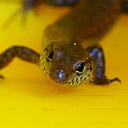Member-only story
Vampire Moths
What’s that tapping on the window pane?
…he used to send in the flies when the sun was shining. Great big fat ones with steel and sapphire on their wings. And big moths, in the night, with skull and cross-bones on their backs.
Bram Stoker, Dracula, 1897
The first records of blood-sucking moths came from Malaysia. It had long been known that some species consumed tears and other fluids from the eyes of large mammals — and humans too, when offered the chance — but not blood. That was a step beyond.
These vampire moths, large, brown, nondescript, were seen feeding on water buffalo, and captive sambar deer and tapirs. They caused distress to the animals whose blood they consumed, but they clung on and persisted until they’d had their fill. Some fed on open wounds; others bored through the skin.
Blood-sucking is common among insects. Bugs do it, so do flies and fleas. The trickiest part is getting through the skin. Some insects manage this with piercing mouthparts, others with biting jaws. Even the tiniest blood-suckers, like sandflies (no-see-ums), are capable of digging deep enough. It is worth the effort. Blood is nutritious and easy to digest. Just avoid slapping hands or flicking tails.
Vampire moths belong to a group (Calpinae, Erebidae) in which the proboscis is…
